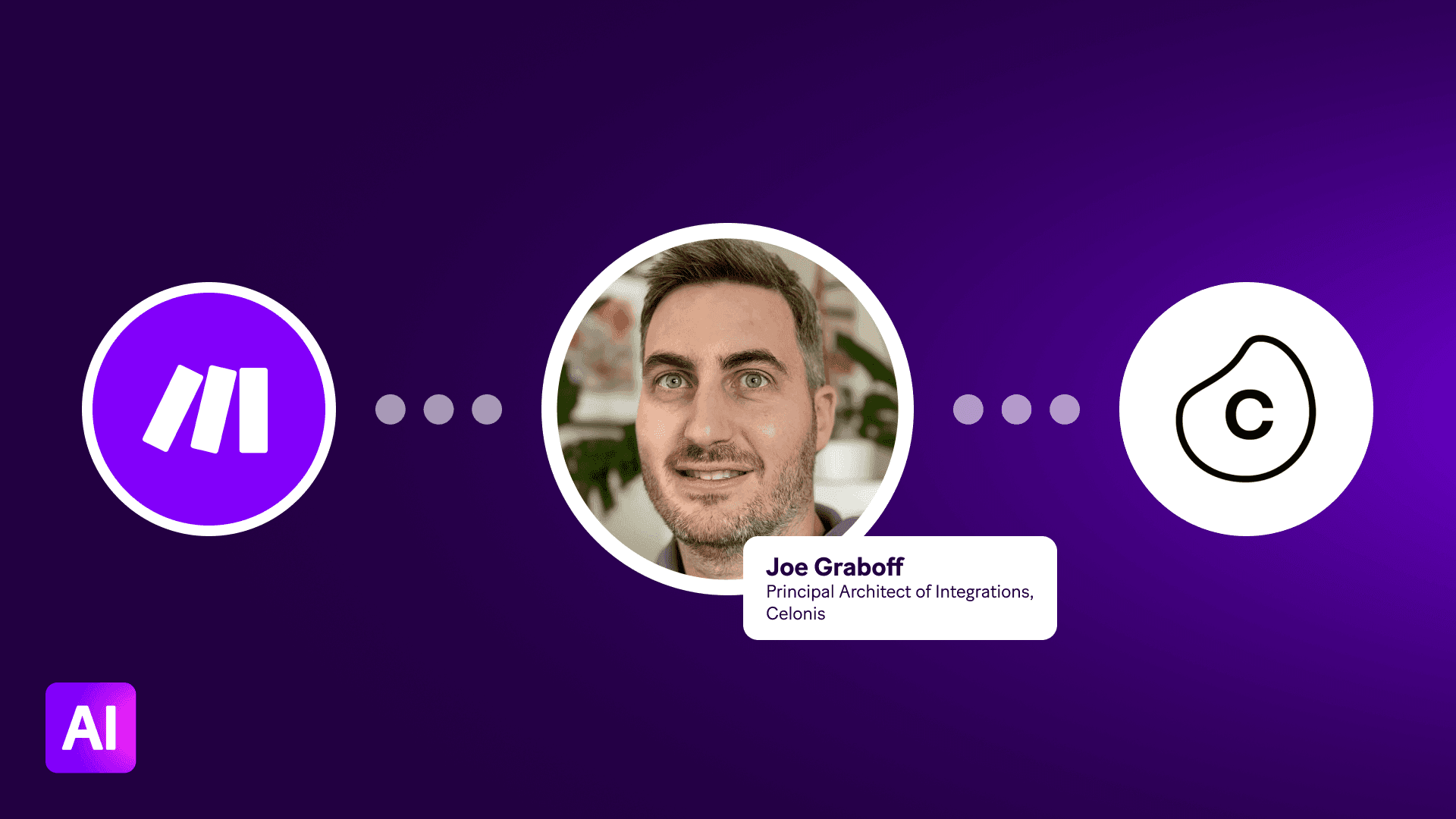Nov 21, 2025 | 5 minutes
Greyt uses AI-powered Make automation to reduce proposal processing time by 95% and cut costs by 99%
Read how Make helped Greyt’s private equity client reduce deal processing time from 3 hours to 10 minutes and cut costs by 99% from $150 to $1.50 per document.

Industry: Professional Services – Business and Management Consulting
Use case: Master Data Management
Country: Germany
Company size: 51-100 employees
Greyt is a German digital transformation agency that helps mid-sized companies modernize their operations through a mix of consulting, automation, and marketing expertise. The agency partnered with a private equity (PE) firm to speed up its deal analysis process. The PE firm processes a minimum of five deal documents daily, each 20-40 pages long with wildly different structures – some packed with diagrams, others heavy on text, all presenting financial data differently. Analysts needed three hours per document to manually extract and organize information into standardized "deal sheets" - even before any assessment of the contents could begin. In order to streamline this process, Lorenz Becker, Founder of Greyt, developed an AI-powered solution using Make, OpenAI, and Airtable that processes these complex financial documents in just 10 minutes. The solution reduces costs from €150 to $1.50 per document while significantly improving accuracy and decision-making speed. In this story, Lorenz Becker explains how this automation not only compiles information but also understands its context with impressive precision and provides valuable advice. This gives analysts space to focus on strategic business decisions instead of data processing.
“What really impresses me is the phenomenal accuracy. Now our client can not only analyze one deal efficiently, but compare many deals with each other, which transforms their entire decision-making process."
Lorenz Becker, Founder of Greyt
The challenges
As the private equity firm increased the number of proposal documents it wanted to process, doing so manually created significant operational bottlenecks.
Overwhelming volume of complex documents
Greyt’s client receives five information memorandums (IMs) daily, each ranging from 20 to 40 pages in length, with highly variable structures. Every IM is unique; some use extensive diagrams and visualizations, others rely heavily on text, and financial data appears in different formats depending on the advisor and industry. This made standardization extremely challenging, yet analysts needed consistent deal sheets to properly compare opportunities.
Time-intensive manual data extraction
Analysts spent three hours per IM manually reading through dense financial documents, collecting key information about the target company, deal structure, investment thesis, financial projections, and historical performance. At €50 per hour in analyst costs, each deal sheet costs €150 to produce. With five IMs arriving daily, the firm was dedicating 15 analyst hours and €750 per day just to initial document processing – time that could be better spent on strategic analysis.
Struggling with accuracy across diverse accounting formats
Information memorandums present financial data using different accounting standards and terminologies. The PE firm, being German-based, required all data to be standardized to HGB (German accounting standards) for proper comparison. Manually converting terms like "PP&E" to "tangible fixed assets" or tracking down missing metrics like net income across multiple document sections introduced risks of transcription errors and inconsistencies that could impact investment decisions worth millions.
How Make helped Greyt save €125k in back office costs
The solution
Greyt built a sophisticated AI automated document processing system using Make as the orchestration layer, OpenAI for intelligent data extraction, and Airtable as the user interface and data repository.
Automated document intake and smart AI processing
When investment opportunities arrive at the PE firm, typically as PDF attachments either by email or through an Airtable form, analysts need a simple way to transform them from the original information memorandum format into a deal sheet. Greyt’s document processing automation starts when a new information memorandum arrives. Make extracts it either from email via webhook or directly from Airtable. Once the document is extracted, Make creates a vector store in OpenAI, letting the AI analyze the entire document.
The automation checks for new documents every 10 minutes, ensuring consistency and efficiency.
Parallel processing architecture for comprehensive deal analysis
Instead of analyzing the document from start to finish in one go, Greyt built the process to work on multiple sections at the same time. Think of it like having several assistants, each responsible for one section: one extracts company names, another analyzes financials, another identifies pros and cons, and so on.
This approach keeps the process running smoothly. If one part takes longer, it doesn't hold up the others. Make coordinates all these tasks, checking in every minute to see if OpenAI has finished each piece. Once everything is done, Make combines all the individual analyses into one complete deal sheet in Airtable.
"Each analysis runs in a separate scenario, so we don't get timeout errors or lose connection to OpenAI. We can now process a 36-page document in just 10 minutes."
Lorenz Becker, Founder of Greyt
Context-aware financial data extraction and standardization
What's most impressive is how the AI handles financial data. It doesn't just copy numbers, it actually understands what they mean. For example, it can find a company's historical performance on page 5 and its future projections on page 30, then combine them into one clear picture.
The AI also adapts to how different companies present their financials. A service company won't have inventory, so the AI skips that line. When it sees "PP&E" (accounting jargon for buildings and equipment), it automatically translates this to "tangible fixed assets" to match German accounting standards.
Most impressively, the AI can connect the dots across different sections. If the income statement doesn't list net income directly, the AI knows to look in the balance sheet for "profit/loss for the year", because in accounting, those two things are the same. It's like having an accountant who understands the logic behind the numbers, not just someone copying data.
“AI was always good at processing information, but I was impressed by what level of intelligence the setup has in handling quantitative data. I think it’s awesome how context-aware it is.”
Lorenz Becker, Founder of Greyt
Structured output with immediate usability
The final deal sheet created by Make and uploaded to Airtable contains everything analysts need: a summary, company details, deal structure, pros and cons, how well it matches their investment criteria, financial assumptions, warranties, and complete financial statements. The financial data can be downloaded as a CSV file and dropped straight into Excel, no more manually typing numbers from one document to another.
Even though the AI is very accurate, analysts still review each deal sheet to make sure nothing's missing. Yet there’s one key difference – instead of spending three hours creating the deal sheet from scratch, they just spend a few minutes checking it. This frees them up to focus on the important work: deciding whether the investment is actually a good opportunity.
"I could ask Airtable which deal is the best. So it not only lets me analyze the deal, but it also compares many deals with each other.”
Lorenz Becker, Founder of Greyt
The results
The automated solution delivered dramatic improvements across time, cost, and accuracy:
95% reduction in processing time – from 3 hours to 10 minutes per information memorandum
99% cost savings per document – from €150 in analyst costs to $1.50 in AI credits
Potential savings of €750 daily and 15 analyst hours on document processing alone (based on 5 information memorandums per day)
Greyt & Make: Freeing up space for strategic choices
Greyt and Make transformed how Greyt’s private equity firm client operates. Make's visual builder and OpenAI integration let them build a solution that handles complex financial documents with impressive accuracy.
The key insight: automation doesn't replace analysts. It frees them from tedious work so they can focus on actual analysis and decision-making. The 95% time savings and 99% cost reduction are impressive, but the real win is giving skilled professionals the capacity to do strategic work instead of data entry.






